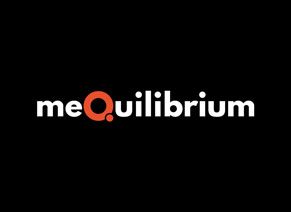In our always-on, improvement-centric culture, we’re forever focused on how we can be better. Even when it comes to self-care, we’re met with a litany of “shoulds”: “I should be meditating, exercising, doing more, working more.” Add to that the pandemic-era pressure to “use this time” to better yourself—and you’ve got a recipe for burnout.
“We’re so used to making every moment of ours productive in some capacity,” says Anne Helen Petersen, journalist and author of “Can’t Even: How Millennials Became the Burnout Generation.” “Either you give up or feel bad about it all the time.”
Many cultures see idle time as sacred. The Dutch even have a word for it: “niksen,” which means to “do nothing” or “to do something without any use.” And it can yield benefits: One study from the University of Utah found that backpackers were 50 percent more creative after spending four days in nature away from their electronic devices. Our greatest successes happen when, rather than overextending ourselves, we balance future goals with an awareness of what we need in the present moment.
With these three steps, you can have it all: Remain steadfast towards your goals while being kind to your present self along the way.
1. Acknowledge the Tension
Self-compassion doesn’t always mean cutting yourself slack. It means making decisions in the short-term that serve you in the long-run. That short walk outside, for example, could help you beat your afternoon slump and make you more productive in the long run. Or maybe there’s something else going on and you need to jot down the thoughts pulling at your attention before getting back to work.
Being honest with what you need, rather than shaming or suppressing urges that don’t follow your plan, can help you get to the bottom of your productivity dips.
2. Redefine Your Progress
Much of our growth happens under the surface and is virtually invisible in our day-to-day, making us feel like we aren’t doing anything, when in fact we are. Kind of like a time-lapse video of a plant sprouting from the earth. You don’t immediately uproot a new plant, right? You watch for small signs of progress: buds, then flowers, then fruit.
According to James Clear, author of the bestselling book, “Atomic Habits,” there’s a common trajectory most of us follow when we make a change, which includes the “Plateau of Latent Potential,” where early on we assume we’re not making progress when we don’t see immediate results. This is where we typically give up. Ironically, it’s often after this plateau that we see a big payoff. “Our effort isn’t being wasted,” he says. “It’s being stored up.”
Look for small signs of progress rather than holding out for that big win. Maybe you’re not yet able to run those three miles, for example, but you take notably fewer breaks when you run two. Solidify this practice by writing down your wins each day, making it a goal to scan for three small accomplishments, rather than a single big one.
3. Don’t Judge the Journey
As much as we’d like our growth to happen in a straight line, the reality looks more like a roller coaster with many ups and downs. So much of the actual change happens en route to the destination; on these twists and turns, rather than at the end. It’s those unique learnings that set your journey apart from anyone else’s.
Be present in your process instead of fixating on how much farther you have to go. Rather than judging yourself for not spending your homebound hours writing a book or mastering a new skill, trust that you’re on the right path for you and are defining that for yourself as you go. Sometimes that means recharging and other times it means pressing harder on the gas. Resist the urge to assign value to wherever you’re at right now.
Effort and rest aren’t mutually exclusive: Recharging is productive when you need it. Hustling can (and should) be done with self-compassion. Whichever moment you’re in right now, the most important thing is that you show up to it with intention.
